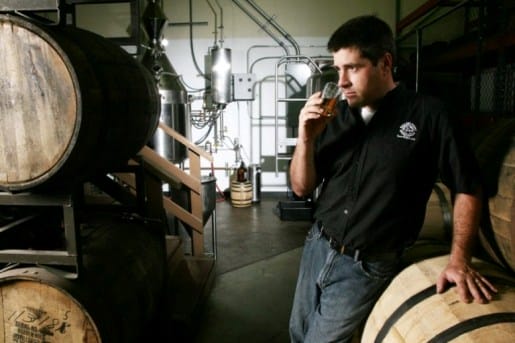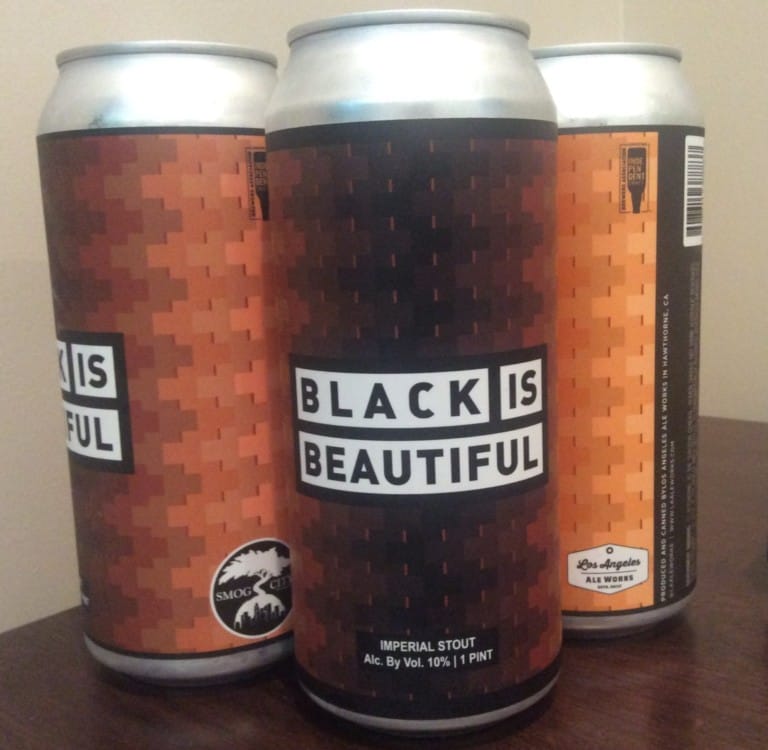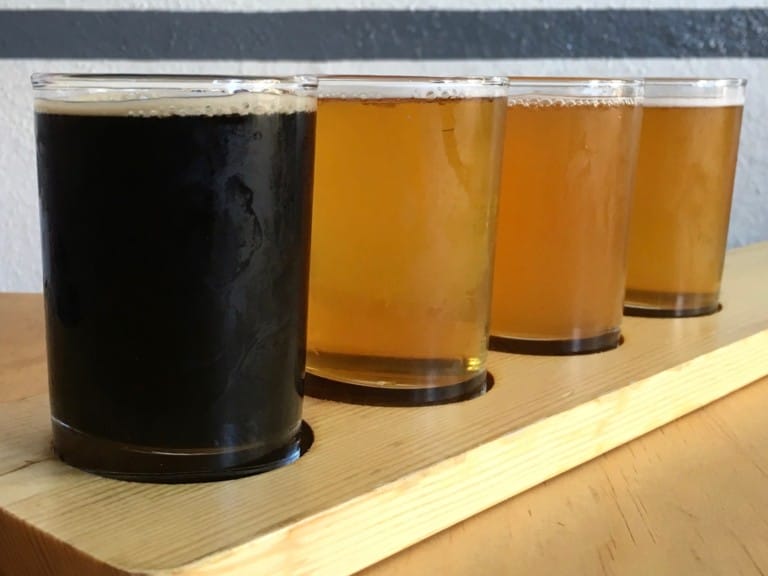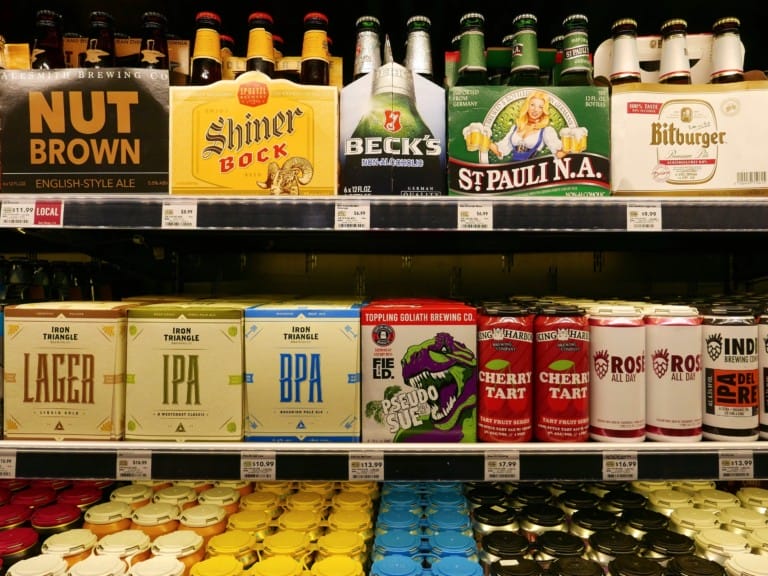Ballast Point Brewing was a 1996 outgrowth of the Home Brew Mart, which Jack White founded in 1992. Yuseff Cherney oversees the bulk of Ballast Point’s beer production at a Scripps Ranch facility that opened in 2005. Cherney already helped lead Ballast Point into San Diego’s upper beer tier, and he recently expanded into the spirit world, which he considers “advanced brewing” and “the next step in alchemy.” Ballast Point Spirits’ Old Grove Gin is already available, and rum, whiskey and bourbon are currently barrel aging. We recently met at Ballast Point Brewing, and he subsequently shared his vision via e-mail.
What distinguishes Ballast Point from other breweries?
The wide variety of products that are offered throughout the year might be something that sets us apart, however, this is mainly evident to San Diegans, as some of our smaller batch stuff never leaves our city. At our last anniversary party (our 13th) we had 40 beers all brewed right here at Ballast Point, from our standards to barrel aged to sours. We truly do have a beer for everyone, not just what has made us and San Diego famous (IPAs and Double IPAs). We are also the first distillery in San Diego and it is right next to our brew house which is producing Bourbon, Single Malt Whiskey, Rum and Gin. The Gin is out now and the rest is aging in new American heavily charred oak barrels. The Barrel Aged Rum (Three Sheets) will be out in February 2010.
How did you become so interested in beer?
I was going to a beer store similar to Bevmo and purchasing shopping carts of beer to try with friends, mostly imports with a few of the early micro brews as well (Sierra, Red Nectar etc.). Most of the imported beer ending up being stale and went for a trip down the drain. I started noticing that I liked the fresher micro brewed beers better than the stale imported stuff. Several friends started home brewing and I decided to check it out, and being somewhat compulsive I set out to know all I could to make the best beer possible. I graduated college and started working in a homebrew shop and landed a part time job teaching brewing at a university extension. It began to be clear that I loved not only the beer but the process and the general alchemy of turning simple ingredients like water, barley hops and yeast into something as delicious as beer.
Do you have a first beer memory? If so, what is it?
I remember some strange beer called Green Rooster that my parents used to buy that was green, or maybe I just thought it was because the bottle was green and it had green in the name, hard to say. After that I remember Mickey’s not because it was good, just because the older neighbor would always be drinking it (stolen from his parents).
What was the very first beer that you brewed?
Some horrible malt extract canned kit beers. If I had not tasted craft beer that was great I probably would have given up, but I knew good beer could be made in small batches. After reading lots of books on brewing including the bible of brewing (Joy of Home Brewing) I realized that all grain homebrew is what I needed to make. I built my own equipment as was on my way to great craft beer.
Where did you grow up?
I was born in San Francisco and lived there for a few years then moved to San Diego when I was about 3. I made a brief move back to the bay area for about 5 years during middle school and was back to San Diego for high school and college.
Where did you attend school?
I graduated from University of California San Diego, and was headed to law school before the beer detoured my life.
What was your major?
I was a Philosophy major with a Biological Anthropology minor.
Do you think that helps you in your position as a brewer/distiller? If so, how?
Of course it helped me, lots of beer drinking when you are pondering the meaning of life.
Do you have any brewing mentors? If so, who are they and what did they teach you?
It may sound cliché, but Charlie Papazian helped me along in the beginning with his book. Although not the most technical is was exactly what I needed, as the homebrew shops of the day were quite bad at dispensing good information. (early 90’s) I also think Ken Grossman is a genius, not only knows how everything works, but continues to innovate and use new technologies. Lastly, Chris White founder of White Labs Yeast who was my home brewing partner and yeast mentor. We would work at night in a lab on campus isolating yeast strains and use them in our latest homebrews.
How did the opportunity arise for you at Ballast Point?
I was hired in the early 90’s by Jack White who founded Home Brew Mart and later Ballast Point Brewing Company. I had just graduated college and was looking for a summer job. Home Brew Mart was a month old and he needed help. I was already teaching brewing at the student center at UCSD, so I was used to helping people out with brewing. As the brewery became a reality I moved out from the retail home brew shop and began to brew with the recipes we had been working on for years as home brewers.
Who are some other brewers that you respect?
Wow, let me see who I can offend by not mentioning them. I already mentioned Ken Grossman of Sierra Nevada, Matt Brynildson from Firestone Walker, Vinnie Cilurzo from Russian River, Fritz Maytag of Anchor Steam, and everyone else that makes beer (fingers got tired of typing, sorry.)
Where do you like to drink beer when you’re not at Ballast Point?
I have a hard time making it out as much as I used to before I had a son. Everyone knows and likes O’Briens and that is probably the go to place, however, the little bistro by my house (Kashtan) (walking distance) has 12 drafts and a couple hundred beers in the bottle, so that is probably my local hangout. With 9 drafts on tap at the brewery and various distilled products to sample it is sometimes hard to leave work.
What’s the newest recipe that you brewed, and what was your approach?
Most of the new brews I am doing are washes made for the distillery involving corn, wheat and barley. I had never used corn in beer production, so it is a new process for me. We made some beer from the bourbon mash second runnings, which was strangely good and very strong.
What motivated Ballast Point Spirits, and what distinguishes your distillery from other distilleries?
I see distillation as the logical next step for brewers. Most of us like the process of making beer as much as the beer and it goes for liquor as well. I made several trips to Kentucky for distillation conferences put on by the American Distilling Institute and I would say that those trips pushed us into the craft. Making what we like to drink, rather than what a marketing company tells us separates us from other distilleries. We love rum, so we make it, we love whiskey so we make it and as far as an un-aged product I find myself drinking lots of gin, yep make that too. We are also using virgin charred American oak on all of our barrel aged products, not just the bourbon, so our rum has a definite whiskey like backbone.
If you could only drink one more glass of beer, what would it be?
If you mean one more beer for the rest of my life, like stranded on an island then it would be Kneitinger Pils from Regensburg, Germany. If it was one last beer like on a death bed than it would be Big Eye IPA.









Blog Comments
Lucy
January 22, 2010 at 1:20 AM
I recently came across your blog and have been reading along. I thought I would leave my first comment. I don’t know what to say except that I have enjoyed reading. Nice blog. I will keep visiting this blog very often.
Lucy
http://dataentryjob-s.com